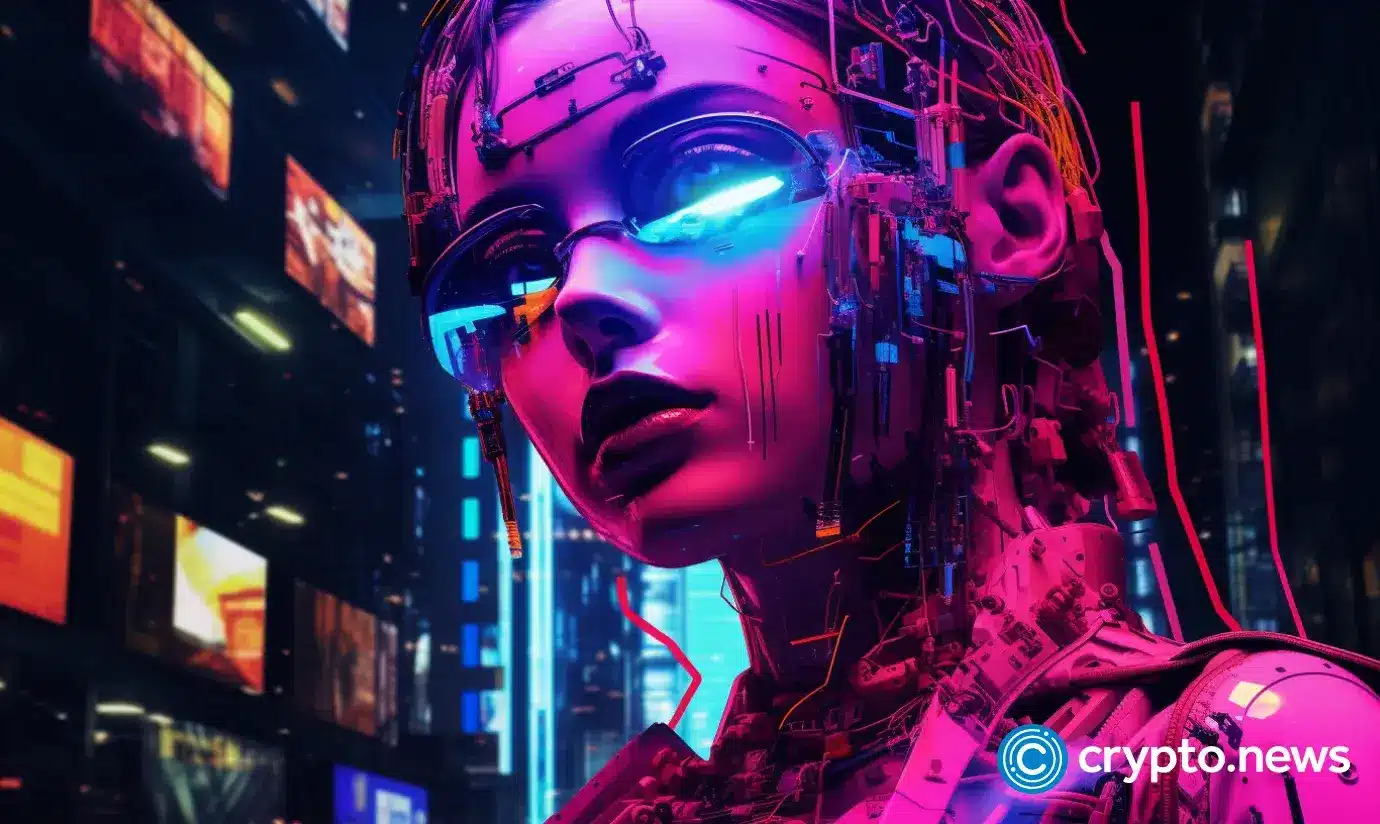AI won’t realize its potential without web3 | Opinion

Disclosure: The views and opinions expressed here belong solely to the author and do not represent the views and opinions of crypto.news’ editorial.
Headlines touting the allure of artificial intelligence’s (AI) disruptive potential might make it seem like we’re already on the cusp of a completely automated and decentralized future. However, the reality is that, while this will be a transformative journey, it will likely be an incremental one over the next decade. First applications will be built by AI as a supporting developer tool. In the next phase of adoption, we will see a transition to applications with AI built-in. Here’s what to expect.
What is built-in AI?
Built-in AI is the natural progression of the AI app revolution from merely amplifying the production of apps to seeing the explosion of apps that use AI as a core part of their functionality. The difference here is that these apps aren’t simply built by AI, but are using AI to create unique value and business models.
Here are potential examples from three distinct sectors showing the difference between apps built by AI and apps with AI as a core functionality:
E-commerce app built by AI: An e-commerce app that is built by AI might have a set of pre-defined templates for product listings, filtering, and sorting. It could automate the process of uploading product images and descriptions by reading data from a spreadsheet, but its functionality might be quite standard and not adapt over time.
E-commerce app with AI as a core functionality: An AI-driven e-commerce app, on the other hand, might use machine learning algorithms to personalize product recommendations based on a user’s browsing history, past purchases, and even social media interactions. The app might also have an AI-driven chatbot that can answer customer queries in real time, improving customer service. It can adapt in real-time to new trends: for instance, taking whatever is going viral on the popular #TikTokmademebuyit and immediately adding it to a Shopify store.
A healthcare app built by AI: A healthcare app built by AI could include basic features like appointment scheduling, reminders, patient record keeping, and maybe even a symptom checker based on a static database. However, it wouldn’t necessarily learn from user interactions or adapt its functionality over time.
A healthcare app with AI as a core functionality: An AI-driven healthcare app might use machine learning to predict potential health risks based on user-provided data, such as age, lifestyle, and medical history. It could use natural language processing to understand and respond to user queries about symptoms and treatments. This app could even use AI to interpret medical imaging, aiding in diagnosis and treatment decisions.
Transportation app built by AI: A transportation app built by AI might automate the process of matching drivers with passengers based on location and destination. It could also use a static algorithm to calculate estimated arrival times and fares. However, its functionality might be limited and not adapt to changes in traffic patterns or user behavior over time.
Transportation app with AI as a core functionality: An AI-driven transportation app might use machine learning to predict traffic patterns, optimize routes, and even predict demand for rides in different areas at different times. This can lead to more efficient service and better user experience. Additionally, the app could use AI to analyze driver behavior and provide feedback to improve safety.
While AI can automate certain processes and tasks, its real value comes from its ability to learn from data and user interactions, and to adapt its functionality accordingly. This can lead to significant improvements in user experience and operational efficiency.
In each of these cases, a “built-in AI” app is likely to provide a more personalized, efficient, and adaptable service compared to an app that is simply built by AI.
What happens when you introduce “built-in AI” to web3?
Blockchain technologies have already exhibited their strength in bootstrapping digital communities, fostering virtuous cycles through aligned incentives, and amplifying network effects through shared ownership.
The introduction of AI into these systems can further enhance these strengths, adding a layer of intelligent automation to an already robust framework.
Consider a music app where creators are rewarded based on how effectively they leverage AI to enhance the quantity and quality of their compositions. The app’s decentralized ownership model gives users greater rewards for participating, leading to exponential community growth. Meanwhile, the app’s AI component allows users to create more with their participation, leading to exponential content growth.
Web3 facilitates the scaling of community building. AI effortlessly scales content production. Together, they have the potential to create rapidly scalable content, constructed by a rapidly scalable community.
This partnership can extend beyond the realm of music and into broader societal impact. Consider how the combination of AI and web3 could augment the work of WaterAid, a global charity that expands access to clean water by building wells and other infrastructure in at-need regions.
The charity, which has actively been exploring the metaverse and blockchain technology, knows that there is a strong correlation between people who lack access to clean water and the estimated 1.4 billion people who remain unbanked across the world. However, because charity data is siloed, it can be hard for others to access and act upon it.
If WaterAid and other charities uploaded their data to the blockchain, AI could search that public data automatically to identify regions that could benefit from both increased access to clean water and increased access to financial services through decentralized finance.
Incoming: The ‘built-in AI’ app explosion
The union of AI and web3 is not just a marriage of convenience; it’s a symbiotic relationship that will drive the next phase of digital evolution, empowering decentralization and creating new models of business, communication, and creativity.
Web3 communities are built on trust, transparency, and shared ownership, fostering virtuous cycles of growth and innovation. AI only augments these natural strengths, providing advanced tools and capabilities to enhance and optimize the operations of these communities.
Connecting the two brings together the best of both worlds: the decentralization, transparency, and shared ownership of web3 with the efficiency, scalability, and analytical power of AI.
The result is a technological powerhouse that can drive an explosion of new decentralized business models and technologies, pushing the ecosystem forward into its eventual, final, phase: Built with AI.














